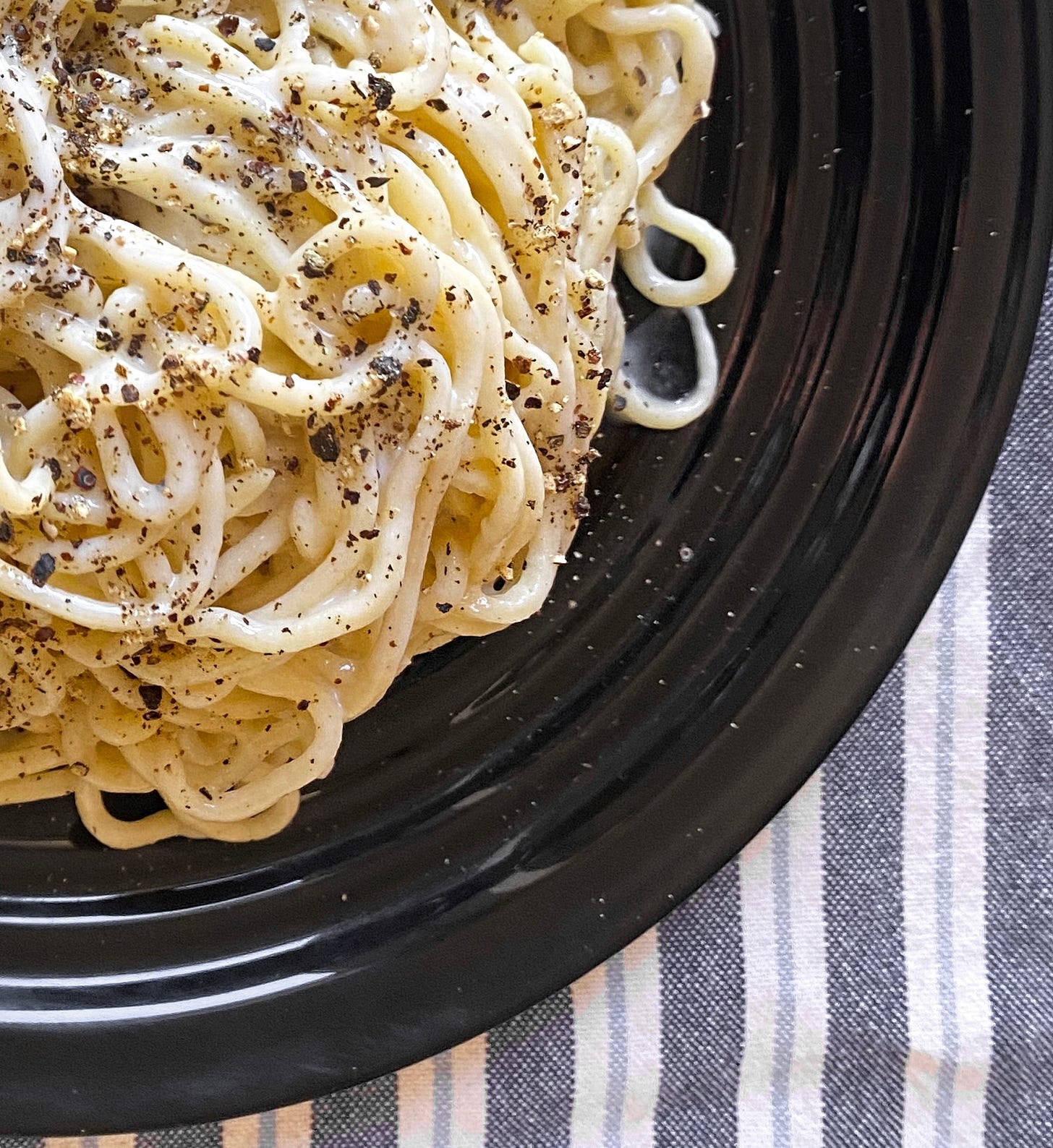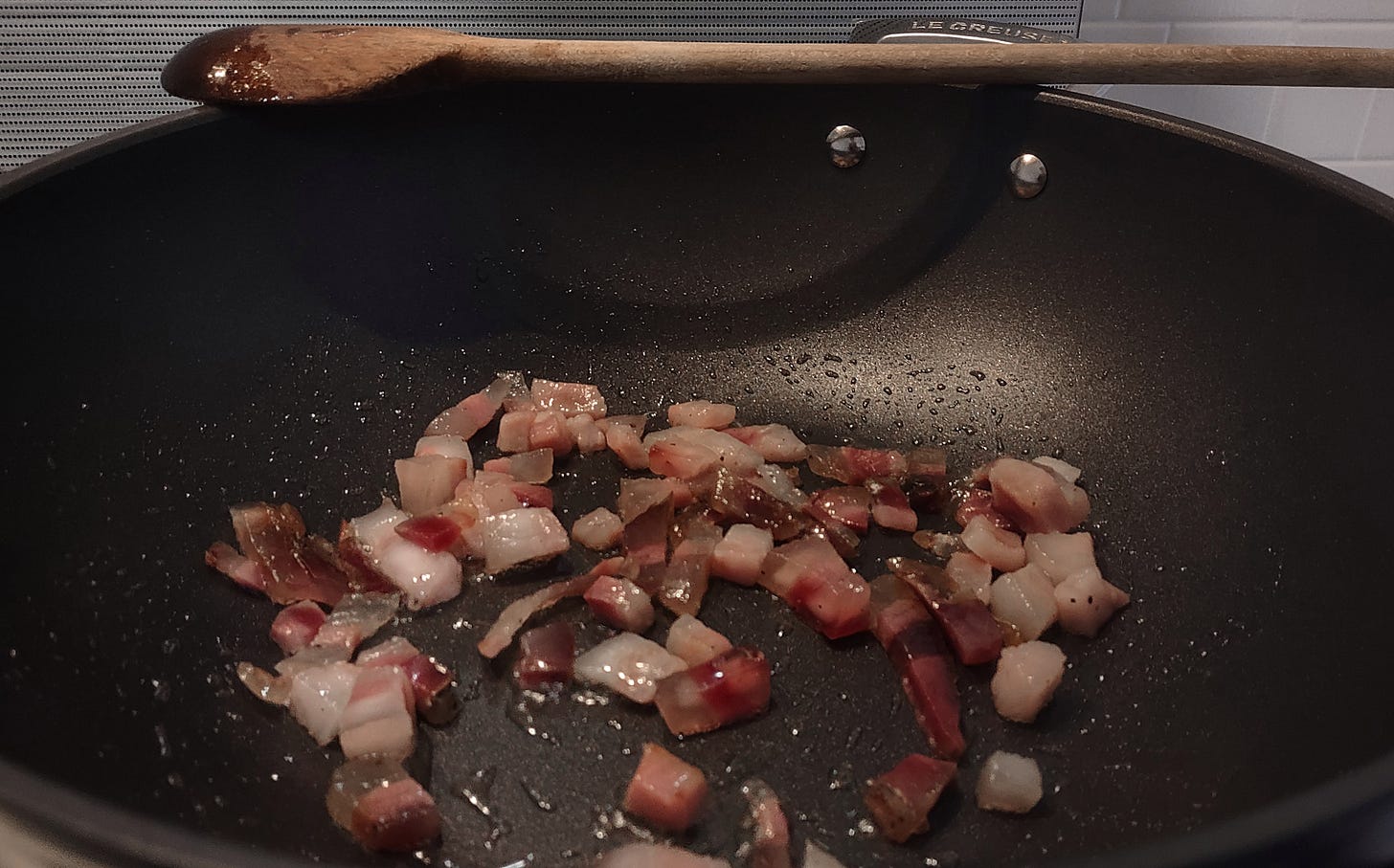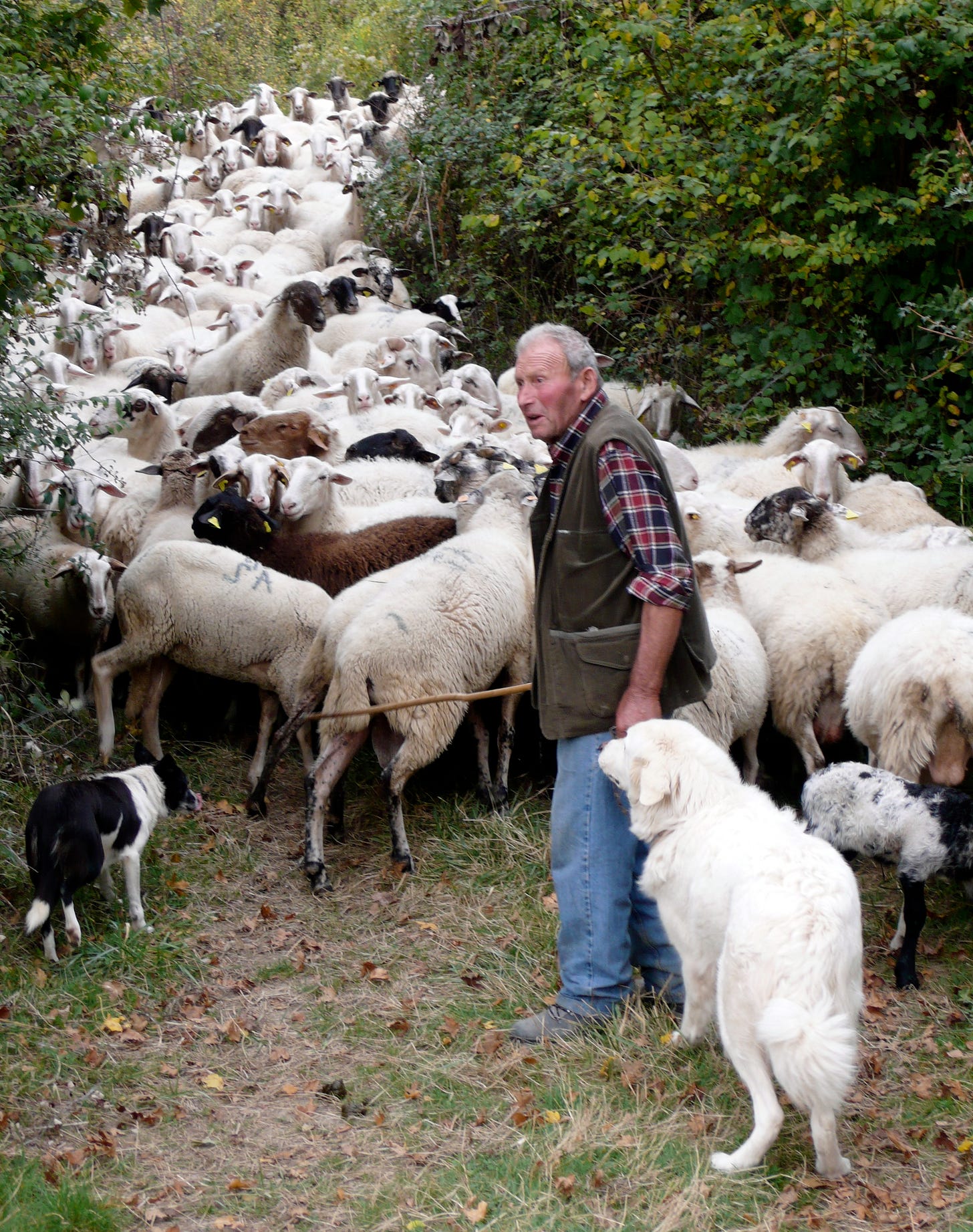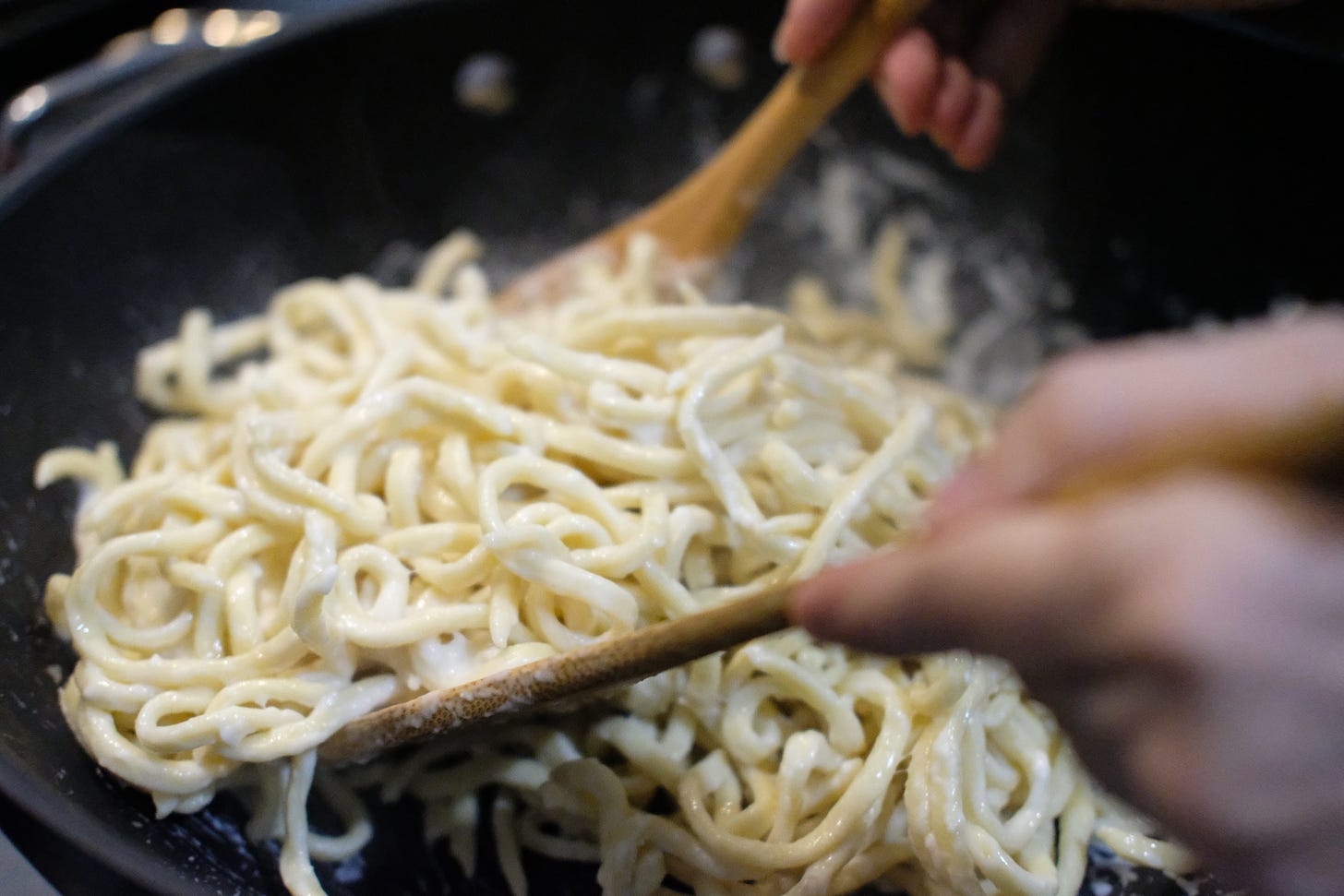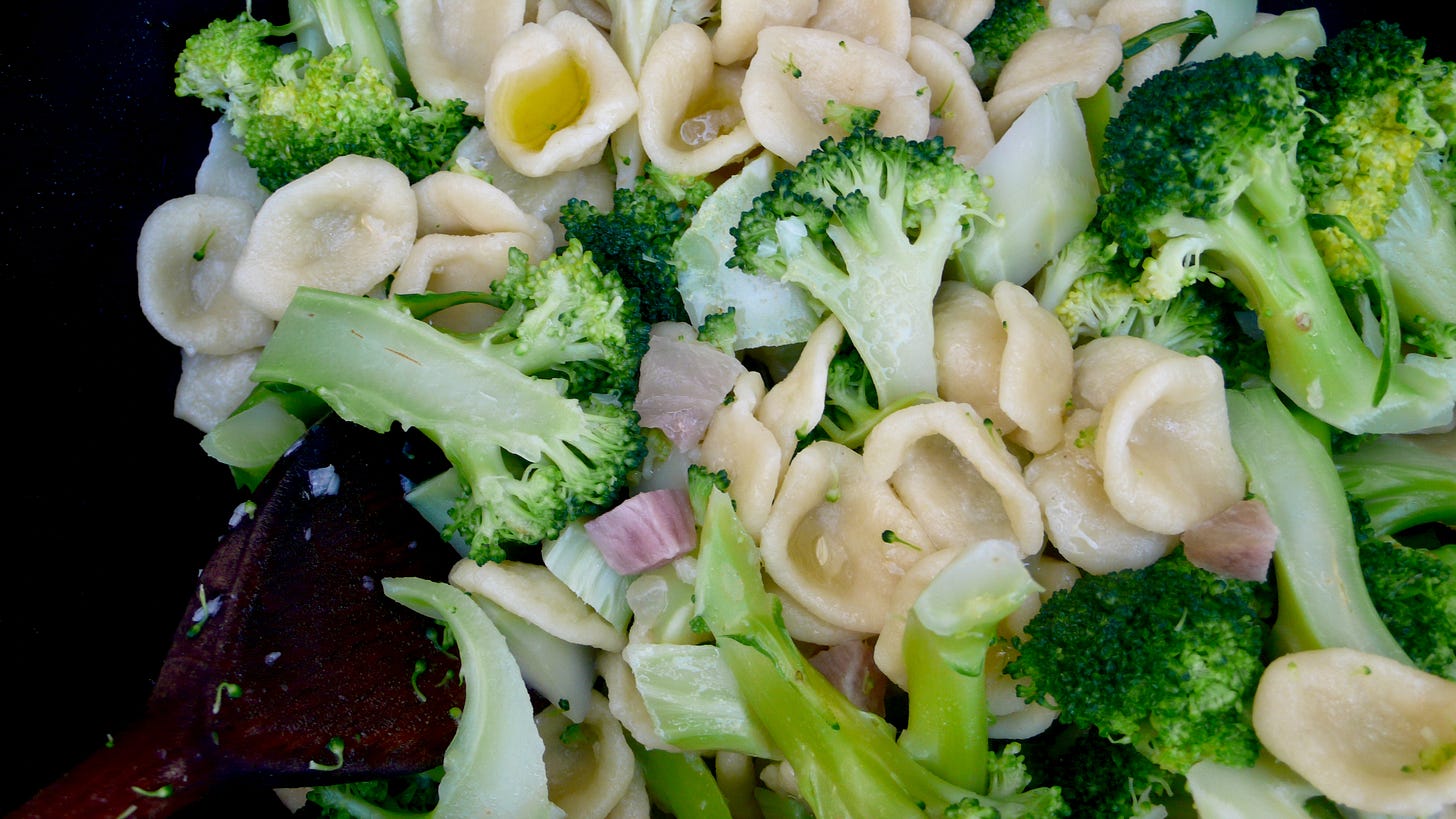The magnificent four: Amatriciana, Carbonara, Cacio e Pepe, Gricia
The "Roman" Pasta that has taken over the world
Benvenuti! Welcome! Thank you for your generosity in supporting my work in so many ways: by sharing your cooking experiences and my stories with others, by becoming paid subscribers, with your heart-warming praise, by joining my cooking classes. I love your company ♡!
A global phenomenon
In the last few decades the four Roman pasta, and especially Cacio e Pepe (recipe), have become a cultural phenomenon that defines the Rome experience as much as the Colosseum, the Vatican, or the Spanish steps.
This is actually quite baffling to Italians of my generation. I have grown up in the 1960s, when a bowl of spaghetti tossed with cheese (cacio) and pepper or a Carbonara appeared on the table when we needed and a quick dinner.
Right then, no self-respecting Mom would have considered an Amatriciana for a Sunday lunch or for guests. The very minimum would have been fresh fettuccini with ragù or -if time allowed- lasagna or cannelloni.
However, times have changed and the magnificent four have become an object of cult.
The process has created monsters, including the amusing habit to apply random names to foods that have not much to do with the original.
Even more entertaining is the latest trend of Italian pasta with miso. And since Cacio e Pepe is just a grown up Mac n Cheese, let’s bring it to the next level, shouldn’t we?
How a recipe becomes tradition
I am not against innovation and variation. All recipes evolve. However, every recipe that through evolution has become a tradition deserves respect.
Let’s consider the Carbonara for example. Basic ingredients: eggs, pork, cheese.
Please bear with me through a few dates:
In 1881, a pasta named Maccheroni Cacio e Ova (cheese and eggs) appears in a Neapolitan cookbook by Francesco Palma. It’s made with pork fat, eggs, cheese and pepper.
In 1931, a guidebook about Umbria describes a sauce for the strascinati pasta, based on eggs, an unspecified cheese, pork fat, sausage and black pepper.
In 1949, the term Carbonara is used for the first time in a public record, not in a cookbook but in a movie, with iconic actor Totò. Recipe unknown.
Later, in 1954 La Cucina Italiana finally publishes a sauce named Carbonara that was made with gruyère as the only cheese, eggs, garlic, pancetta and black pepper.
By the 1960s and early 1970s Carbonara was an established recipe and made nationwide mostly with pancetta. Besides the eggs and pepper, recipes might include also one or more ingredients among wine, cream, parsley, garlic, onion, Parmigiano and/or Pecorino.
Also, no one considered it a Roman recipe at that time. It is actually only in the 1991, with the onset of minimalist cooking, that a recipe based solely on guanciale, eggs and Pecorino cheese is published by historian Livio Jannattoni.
In his cookbook entitled The cuisine of Rome and Lazio, the Carbonara is listed among dishes that “have almost acquired a provisional right of Roman citizenship”.
Roman or not however, the combination of flavors that makes it recognizable as a Carbonara still withstands the test of time.
Obviously, no recipe is inscribed in stone. However, it seems misleading to give the same name to dishes that lacks most of the fundamental ingredients and techniques of the original. Especially when the only goal is to help the Google rankings.

The legend of the gourmet shepherd
Like for many traditions, the origins of the Roman pasta recipes are wrapped in mystery. This is not a surprise as recipes are often the result of the combination of collective ideas and locally available ingredients. As presented above, only when a recipe is published for the first time in a cookbook, it is considered a model.
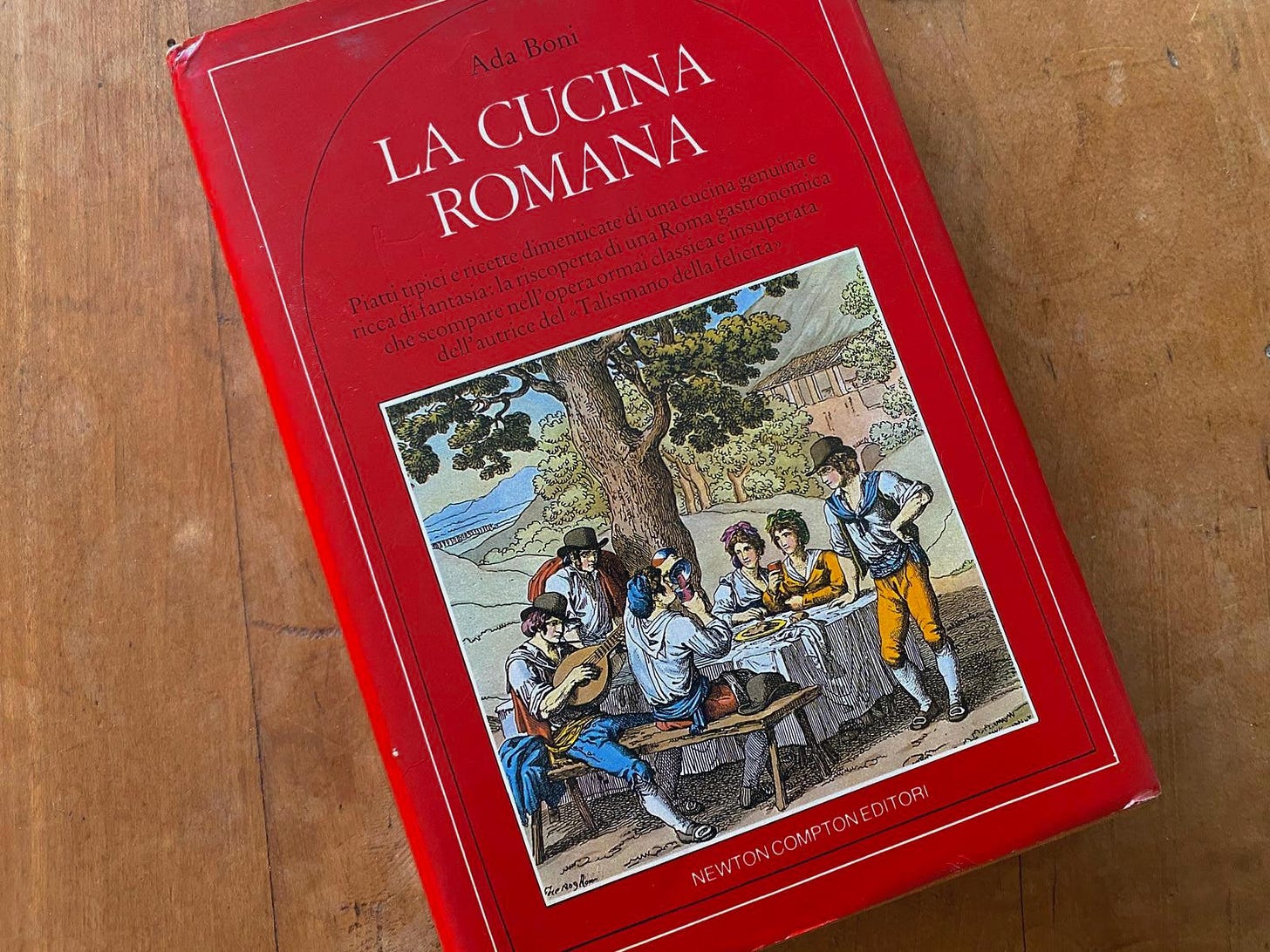
According to widely published legends, the roots of Amatriciana (recipe), Gricia e Cacio e Pepe are tied to the shepherd life of central Italy. During transhumance - the seasonal movement of livestock between summer and winter pastures - the shepherds carried with them long-lasting provisions such as guanciale and flour.
The legend continues by stating that over time, these rustic preparations evolved with the addition of tomatoes in the early 1800s, creating therefore one of Italy's now renowned culinary creation, the Amatriciana.
Now, let’s shed the romance. Imagine the situation of a poorly paid shepherd who has to walk through the wilderness for days, from one to another mostly uninhabited mountain.
He will spend nights in the fields or in caves surrounded by animals and probably trying to fend off wolves and other threats. What is the chance that at his next stop he will have the time and facilities to make pasta from scratch and even a tomato sauce?

These accounts are not only inaccurate but lack historical evidence. Pasta, as we understand it today, wasn't widely consumed in Italy until the mid 17th century, and when it was, it was typically reserved for wealthier classes. It is also well documented that pasta with cheese enriched with and sweet or hot spices was known and appreciated by the upper classes since the late Middle Ages.
While it's plausible that shepherds carried some form of dried or cured meat during transhumance, the idea that they used it to season pasta is more fiction than fact. Until relatively recent times shepherds primarily relied on soups enriched with foraged ingredients, dried breads (e.g. carasau or taralli), hard cheese and anything that could be traded locally with freshly made ricotta, like eggs and wine. Throughout the centuries, their life was light-years away from the ones who could afford pasta with cheese.
What to cook this month
Goodbye sweet peppers and eggplants, and welcome cabbage and broccoli!
The change of the season is marked by the appearance of so much healthy vegetable right now: cabbage and lots of leaves, superbly fresh spinach, chicory, Swiss chard, fragrant rucola. I cook leaf vegetables almost every day to use as a side dish or to mix them into soups, pasta or frittata.

It is finally cool enough to use the oven, so savory tarts have returned on rotation. You could try this truly delicious vegetarian cauliflower crostata. I had to think of it because it also has gruyère :) which melts so beautifully over the caramelized cauliflower.
If you use store bought pastry, you can make one of these tarts in 20 minutes plus baking, however you will find a recipe for a GF crust in the post. Here is a quick video I made years ago, please play the sound for an additional vintage effect. Note how the crostata puffs up after baking, almost like a soufflé. I can’t help to be delighted every time that happens.
Last but not least, I can never miss a chance to remind you of one of my absolutely favorite pasta, penne with broccoli and anchovy. Another weekday, super easy meal and so full of goodness. You can also make it with guanciale instead of anchovy, like in the image below. Dice about 1 oz/ person of guanciale and crisp it up in a pan. Add 1 finely minced garlic clove and sauté briefly until fragrant. Proceed like the rest of the recipe.
Should all the above sound too healthy, you could always use that guanciale to make the cinderella of the Roman pasta. The one that’s never in fashion because let’s face it, you only make it when there is hardly anything else left in the fridge.
Tonnarelli alla Gricia
Keep reading with a 7-day free trial
Subscribe to MADONNA DEL PIATTO to keep reading this post and get 7 days of free access to the full post archives.




